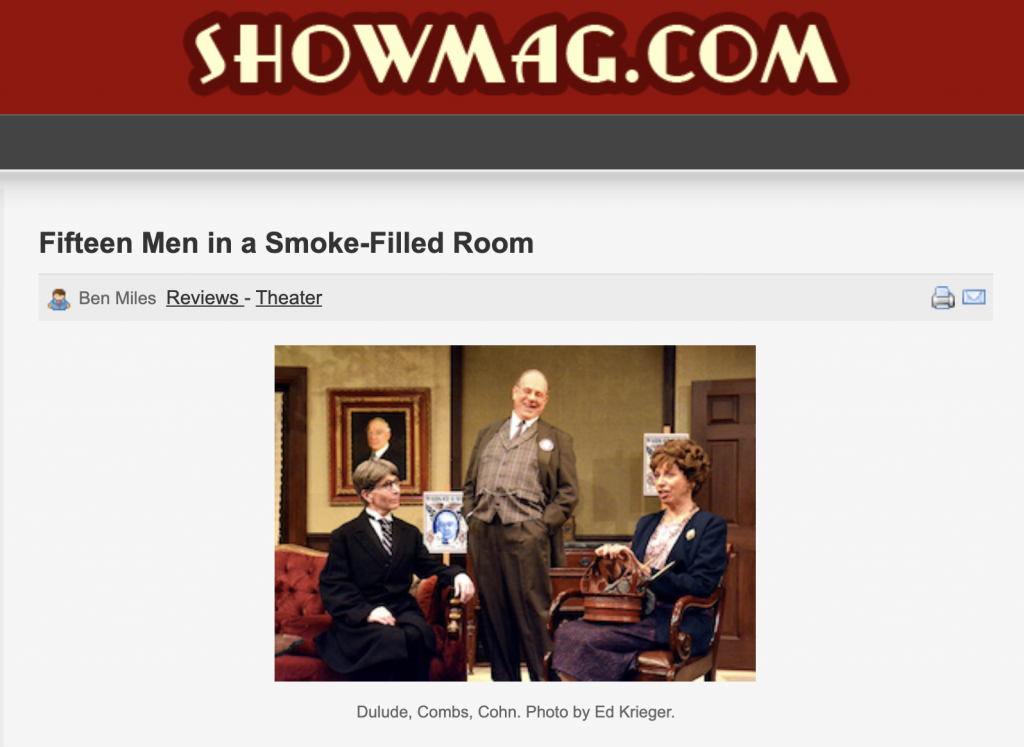Many thanks to Ben Miles at ShowMag.com for this great review of “Fifteen Men!”

Review of “Fifteen Men in a Smoke-Filled Room” by Ben Miles (ShowMag.com)
Until the start of the 20th century, Warren G. Harding, the 29th president of the United States, was considered by most historians to be the low man on the presidential totem pole. Harding’s administration—from 1921 until his mysterious death in 1923–was ridden with scandals; some of which, such as the Teapot Dome incident and Harding’s clandestine extramarital affair, came into public consciousness after his tenure was cut short by his cardiac arrest at the age of 57.
Now in a premiere production of Fifteen Men in a Smoke-filled Room, penned by playwright Colin Speer Crowley, we get an imagined peek behind the scenes of the 1920 Republican National Convention held in Chicago, which made the unlikely choice of the anodyne Warren G. Harding as the GOP’s presidential standard-bearer; his less-than-awe-inspiring campaign slogan was a plea to “return to normalcy.”
In spite of sturdy direction by Jules Aaron, Crowley’s script tends to meander in the gaping chasm between the practical and political, as represented by Harry M. Daugherty—who was Harding’s campaign manager and later became U.S. Attorney General (played with much believable bluster by John Combs) and the mystical and metaphysical as represented by Harding’s clairvoyantly obsessed wife, Florance Kling Harding (performed with supercilious condescension by Roslyn Cohn).
But it is David Hunt Stafford as Harding who infuses the president-to-be with self-doubt and portentous dread. Along with Sarah Walker, who portrays Nan Britton, Harding’s nubile mistress, Stafford brings heart to the historic figure and a moment or two of hilarity as Nan attempts to avoid the gaze of culpability from Mrs. Harding.
Also deserving of honorable mention are Roger K. Weiss as the ghostly-appearing radio broadcaster and Kevin Dulude doing double-duty as the railway tycoon and magazine editor George Harvey and as “the waiter.”
Technically Fifteen Men runs with the proficiency of a Swiss watch, from the set design by Jeff G. Rack, which is elegant and a period-perfect replication to Michelle Young’s equally impressive costumes, which evoke 1920s fashion, to Joseph “Sloe” Slawinski’s sound engineering, which alludes to the cacophony of noises that might come with a political convention and Brandon Baruch’s lighting motif, which provides shadings in mood and variations in location.
However corrupt and inept the Harding Administration may have been, the fact that our country was able to overcome the detriments of that epoch gives us hope in our own age of political incompetence. That’s the value in experiencing Fifteen Men in a Smoke-filled Room.
